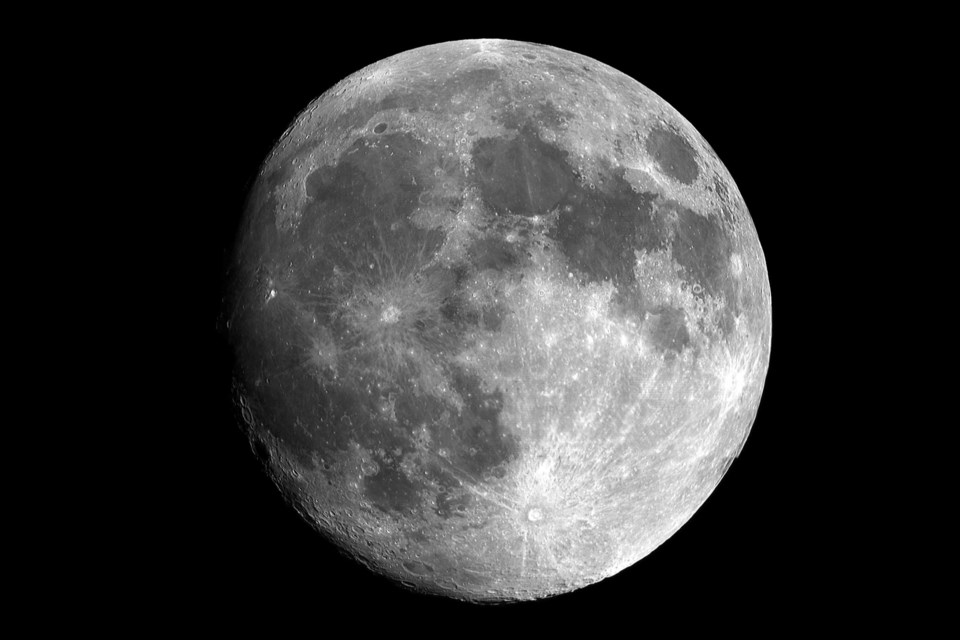In the opening scenes of the 2009 film “Moon,” viewers watch as lunar miner Sam Bell lives a solitary existence while keeping watch over the helium-3 mining operation he’s been sent into space to manage.
Piloting a rover across the moon’s pockmarked terrain. Monitoring screen readings. Performing regular maintenance on the equipment.
His work enables his employer, Lunar Industries, to provide a steady stream of clean energy for clients back home on earth.
But as true-life scientists get closer to figuring out how they can really mine the moon’s resources, Doug Morrison said we shouldn’t be taken in by Hollywood fakery.
“Unlike some of the movies that we’ve all seen, we’re not sending miners, and we’re not sending drillers to go do drilling and extraction techniques as we do them here on earth,” said Morrison, CEO of Sudbury’s Centre for Excellence in Mining Innovation (CEMI), during an April 13 web call.
“That is a fantasy, and we shouldn’t be at all misled by that fantasy.”
In hosting the call, Morrison and CEMI opened a discussion about how mining might successfully be done on the moon and how Canada’s terrestrial mining industry can help.
If it sounds like more sci-fi, the possibility is closer than we may think.
Recently, NASA announced the crew for its upcoming lunar mission, Artemis II — including Canadian Jeremy Hansen — which is set for November 2024. It will mark the first crewed flight to the moon since the Apollo 17 mission in 1972.
Though it will just be a “flyby,” NASA’s eventual goal is to harness the moon’s natural resources — called in situ resource utilization (ISRU) — to enable trips of six days or more.
“The Artemis III mission will go back to the surface of the moon, but post Artemis III, there is a plan to build up, incrementally, an infrastructure to support longer duration missions,” explained Mathieu Giguere, a planning analyst with the Canadian Space Agency.
“ISRU is really expected to use local resources to extend those missions and it also will reduce the cost of the missions by reducing the need to resupply from earth.”
Because of its long history of mining and mineral extraction expertise, Canada is viewed as an important contributor to the conversation around lunar mining, Giguere said. There’s potential through this process to adapt existing mining techniques, while also developing new ones.
“The Canadian mining sector has proven expertise in remote areas, harsh environments, and ultra-deep mining, and the ISRU spans across a whole value chain: prospecting, assessing, extracting, refining, and processing the resources,” he noted.
“Those should be words that are very appealing to the mining sector.
As experienced as Canadians might be, however, mining on the moon is expected to be drastically different from mining on earth, Morrison noted.
The moon has no atmosphere and no liquids. It gets both very cold (-230 degrees Celsius) and very hot (+120 degrees Celsius), and most parts of the moon are in shadow most of the time.
Scientists are currently focused on learning how to extract the moon’s regolith, which is very fine dust, and water-ice, which is found in very small amounts in the regolith and in large pools, all frozen.
If they can figure out how to mine the water-ice, they can produce oxygen and hydrogen, which would open the possibilities for longer-term trips.
“I always tend to put ‘mining’ in quotes because I think it's very unlikely that we're actually going to use the kinds of mining techniques that I'm familiar with on the moon,” Morrison said.
“We will certainly be using extractive efforts, but the kind of equipment that we use on earth today is almost certainly not going to be what we use on the moon.”
In other words, said Dale Boucher, NASA won’t be sending up a Caterpillar D8 bulldozer to do the job any time soon.
“That just doesn’t make sense, largely because it’s just too darned expensive to get it there, and it won’t operate anyways,” said Boucher, who’s been working in the space technology field for more than 20 years via his company, Deltion Innovations.
“But we do need to think about the basic principles of the mining aspect — the geotechnical and geochemistry — that we understand in the mining industry very well, and how do we start adapting this to work in space.”
Operations on the moon have to be sustainable, Boucher said, and autonomous. If a tire on a rover goes flat, how do you change it?
Even the simplest of questions need answers: how do you build a road? What kind of energy is required?
Regulatory issues must also be considered: what kind of legal framework will organizations operate under, how do they determine and protect property rights, and how does one prove it’s done its due diligence — something mining companies might cover under an NI 43-101 report now?
“These are all issues that the (space) agencies are just starting to look at, but the mining industry has been dealing with in many fashions for decades,” Boucher said.
Morrison was clear that CEMI doesn’t have answers to those questions right now, but the research organization aims to be a conduit for scientists, innovators, and those with the mining expertise to explore potential solutions. It may take a number of baby steps to get there.
“We have to walk before we can run,” Morrison said.
“We’re in a situation where we can’t actually dig a hole (on the moon) right now… there are lots of things we have to do, and do very well, reliably, day in, day out, before we get to many of these more advanced issues that we know we have to get to.”




